Aspect Patterns (Jones’ Patterns)
An aspect refers to the specific angular relationship between two points in a horoscope. Typically, aspects are formed between two planets, although aspects between a planet and the angles (Ascendant, Descendant, MC, and IC) are also taken into account. The closer an aspect is to being exact, the more significance it holds according to astrological tradition. The variation between the precise aspect and the actual aspect is termed the orb. In the central circle of the natal chart, astrological aspects are denoted, with different colors and symbols used to differentiate between various aspects.
Aspects serve to determine how planets interact to enhance or temper each other’s effects. They are categorized as major or minor, as well as harmonious or tense. Major aspects typically hold more significance than minor ones, although some astrologers place greater emphasis on the minor aspects than others.
Tense aspects create friction among the involved planets, leading to challenges and issues, which could be psychological, environmental, or a blend of both. While some may struggle and experience setbacks in dealing with these challenges, others are motivated to overcome them, thus unlocking and developing their astrological potential. On the other hand, harmonious aspects foster a smooth interaction between the planets, offering a supportive environment for innate abilities that individuals may possess but might not fully develop without external encouragement.
Indeed, each type of aspect has its dual nature. Tense aspects, while posing challenges, can also serve as catalysts for significant accomplishments. Conversely, harmonious aspects, while providing favorable conditions, can sometimes lead to missed opportunities if not properly utilized. Ideally, a balance of tense and harmonious aspects is desirable. Individuals with only harmonious aspects may possess abundant potential but lack the motivation to realize it fully. Conversely, those with only tense aspects may struggle with faith and optimism, hindering their ability to overcome obstacles.
See-Saw
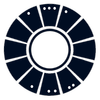
This pattern, known as the See-Saw, divides the planets into two distinct groups positioned opposite each other in the chart, typically spanning at least sixty degrees or two signs. True to its name, individuals with this configuration often oscillate between two contrasting alternatives in their lives. Integrating these divergent aspects can be challenging, as they may seem to compete with each other. However, successful navigation of these contrasts leads to increased sophistication and a poised, seasoned demeanor, enabling the individual to adeptly handle a wide array of life’s situations.
Bundle
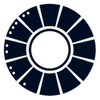
In this configuration, the planets cluster tightly within a compact space of 120 degrees, akin to three signs of the zodiac, forming what’s known as a ‘bundle.’ This dense concentration of planets gives rise to an individual characterized by intensity and unwavering dedication to personal pursuits. However, their focus on their own interests may limit their perspective and understanding of others, making it challenging for them to engage in meaningful relationships. The optimal path for such individuals often involves immersing themselves in endeavors that demand deep concentration, persistence, and unwavering commitment, or specializing in a particular area of expertise.
Bowl
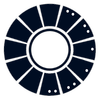
In this arrangement, the planets gather into a ‘bowl’ formation, occupying a single hemisphere spanning 180 degrees or the equivalent of six zodiac signs. This pattern carries significant weight, especially when all the planets are confined within one hemisphere. Individuals exhibiting this pattern tend to be self-contained, seeking endeavors that resonate with personal meaning and fulfillment. They possess a ministerial quality, driven to pursue careers or vocations that promise the greatest benefit for themselves and others alike.
Bucket
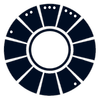
In this configuration, similar to the bowl pattern, all the planets gather within one hemisphere, forming a ‘bucket’ shape. However, in this case, one planet resides in the opposite hemisphere from the rest, serving as a handle for the bucket. This lone planet, known as the Singleton, assumes particular significance, shaping the individual’s activities and fundamental energy.
Individuals with a bucket pattern often seek to align themselves with mainstream society, desiring a sense of belonging. However, they typically expect the world to recognize their unique talents rather than conforming to societal norms. Their efforts are often directed towards a single purpose, with a focus on achieving objectives rather than merely self-preservation. The nature of the Singleton planet that forms the handle plays a significant role in shaping their behavior and motivations.
Locomotive
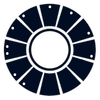
In this configuration, known as the locomotive pattern, all the planets gather within 240 degrees or nine signs of the zodiac, leaving a significant gap of 120 degrees completely unoccupied. The planet that rises clockwise following this empty space assumes special importance, exerting a strong influence on the individual’s life, regardless of their sun sign. This leading planet acts as the ‘locomotive’ of the natal chart, propelling the individual to pursue goals with determined and unwavering effort. They possess an exceptional drive and reservoir of energy, often demonstrating a tendency towards solitude as they await public recognition of the truth they have long advocated.
Splay
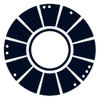
This kind of birth chart is notable for featuring at least two, but typically three pairs (or conjunctions) of planets scattered in a ‘splay’ arrangement across the chart. Individuals with this pattern possess significant talent and potential, which requires deliberate attention to develop into valuable skills. They tend to be individualists, eschewing regimented or highly organized lifestyles, and they actively seek to avoid falling into routines. However, they often face the challenge of lacking coherence between their various skill sets, which may prevent them from fully capitalizing on their abilities. Consequently, such individuals need to focus on consolidating their diverse talents and bringing them into alignment to realize their full potential.
Splash
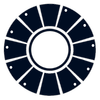
This pattern, aptly named the “splash,” occurs when the planets are haphazardly scattered across the chart without forming any discernible pattern. Individuals with this pattern possess diversification as their primary asset, exhibiting a universal and enriching perspective on life. They are often eager to share their life and resources in a universal manner, seeking to contribute wherever the need is greatest. However, similar to the splay pattern, there is a risk of dispersing energy unproductively, potentially diluting their efforts across too many endeavors.
















































